The Carnival has been dogged by controversy, yet the hit parade rolls on, getting grander by the year
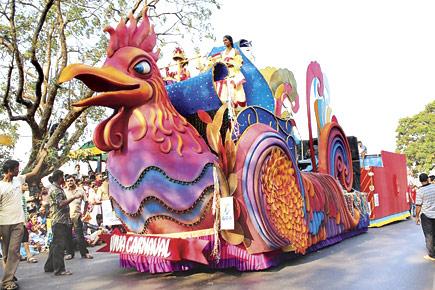
It began as a small street parade with a few floats in the capital city, Panaji. The highlight of the Goa Carnival was King Momo’s float, and all eyes would be on what the monarch’s costume would be, and how his mermaid attendants would be dressed.
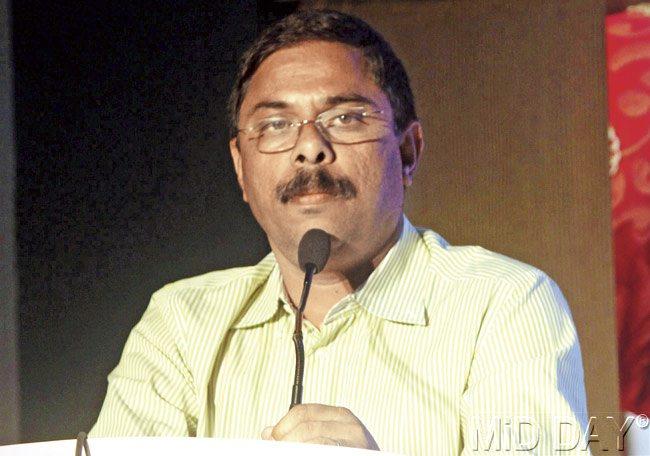
Goa Tourism Minister Dilip Parulekar announcing the Carnival programme at a press conference in the city. Pic/Emmanual Karbhari
ADVERTISEMENT
In the conservative ’70s, costumes were modest and the emphasis was on the colour schemes of dress and carriage. Families aiming to get good viewing spots would arrive early in Panaji, which shook off its sleepy stupor for the event.
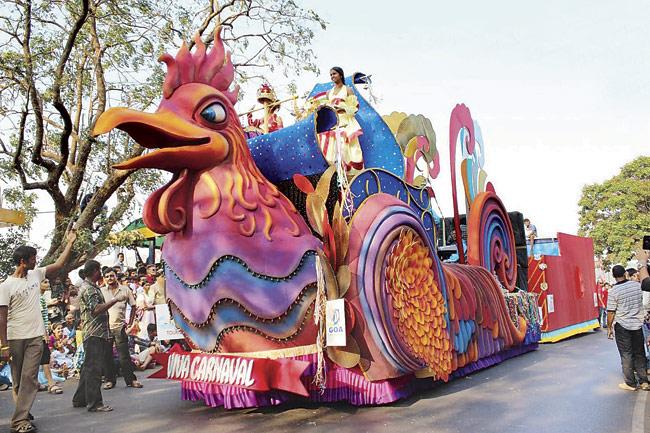
Elaborate artistic work goes into the making of the Carnival floats
Showcases of folk dances and imaginatively-constructed floats were the highlights of the parade. Local businesses did well during the festivities, and stalls sprang up selling sweets, snacks and typically pink-and-green plastic dolls.
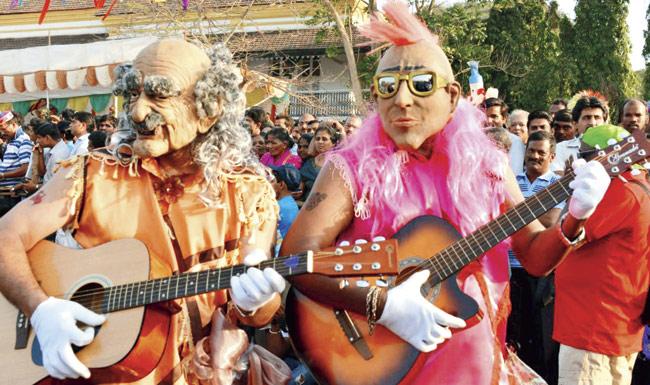
The masks may become more elaborate and creative, but the theme is the same
Changing times
In pre-liberalised India, things had a different pace, and so it was with the Carnival celebrations. But as tourism began to grow in popularity, the Carnival became increasingly commercialised.
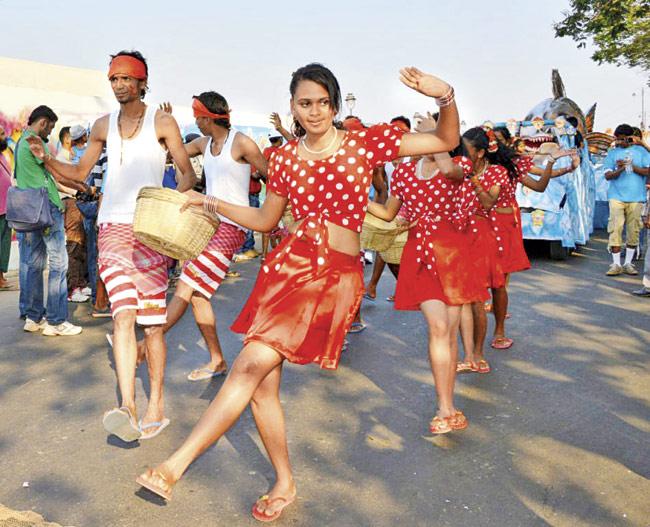
Folk dances, such as this fisherfolks’ dance, are showcased during the Carnival procession
Liquor firms, thirsty for profits, saw the floats as a slow-moving target and soon the advertising threatened to overwhelm the floats’ very themes. People began to bemoan the hijacking of the festival, but crass commercialisation was the least of the worries for the colourful celebration.
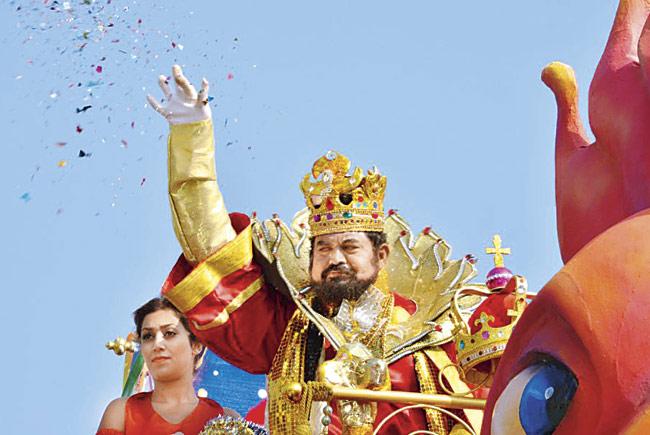
King Momo declares the three days of feasting open
The Roman Catholic Church, disapproving of what it saw as falling moral standards and manipulation of young people in advertisements and promotions, began calling for boycott of the Carnival from the ’80s onwards.
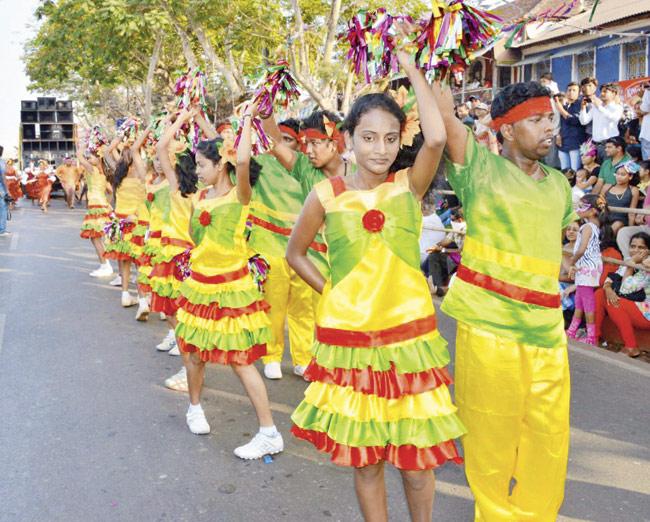
Folk dances with a Portuguese flavour are part of the Carnival
At a press conference in the mid-’90s, Father Alberto Luis, director of the Goa Archdiocese Service Center for Social Action, had urged parish priests, chaplains and religious institution heads to think about the “adverse effects” of the commercialised Carnival, saying it had been reduced to “a cheap and futile parade of our sisters, mothers and daughters, who are made to trade away their beauty and innocent charm on carnival floats”.
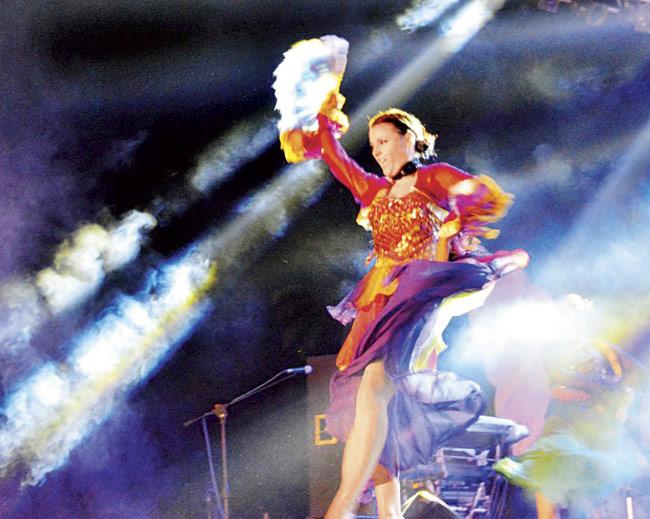
The Carnival is a sure draw for the Goan tourism industry
Recalling that the Carnival used to be celebrated in “innocent fun and joy”, he warned Goans that “money will not buy back a lost reputation”.

The Carnival kicks off a season of merriment
“Jarring music, vulgar dress and dance do not promote culture,” he said, recalling that young people used to have “a heart-warming, mirth-filled carnival”. The Church had even organised a demonstration in 1993 in which several members of the clergy were injured and one was arrested.
Protests galore
Joining the Church in anti-Carnival protest, the Jagrut Goenkarancho Fouz (JGF) or Vigilant Goans’ Army, a citizens’ group set up in 1987, has long railed against the corruption of the Goan way of life, among other things by the Carnival.
Accusing the government of ignoring protests by the people and increasing its foreign exchange reserve at the cost of Goans, the JGF says the tourism department is hijacking local cultural festivals and depicting Goa as a land of free women, song and dance.
Women’s groups agree, saying parading women in skimpy clothes misleads others to think Goan women are “frivolous, flirtatious and of easy virtue” as one group, Bailancho Manch, puts it.
Marching on
However, all this has been as water off a duck’s back for the Goa government. Tourism in the state has been given the status of an industry (which means that the state can intervene to ensure its development in the public interest), and it is no holds barred when it comes to promoting the sun, sea and sand and even raindrops.
Many have added another ‘s’ to the mix sex, especially so after the recent case at the ThinkFest 2013 where journalist Tarun Tejpal has been charged with raping his junior colleague.
It has been an issue for decades, with the brash promotion of Goa as a destination for “easy” women having led to increased harassment of women in the state. But nothing has stopped or even slowed the Carnival juggernaut.
If anything, it has become bigger and glitzier. From local bands, the Carnival performances have evolved to feature big groups and singers of country-wide renown.
This year, the lineup includes Strings, the Raghu Dixit Project, and a Brazilian samba group. Besides the usual fireworks (and not the kind emanating from protest groups), a fashion show has also been planned this year.
This year the film Youngistaan has also tied up with the event, and stars Jackky Bhagnani and Neha Sharma were part of the festival’s promotion.
Announcing the programme, Goa Tourism Minister Dilip Parulekar said earlier this week that more than 2.5 lakh tourists were expected to visit during Carnival. This means that Goa’s accommodation and transport resources are likely to be strained to the limit.
But Parulekar brushed aside questions of overburdened resources, saying all arrangements have been made for security and transport. “I have never seen any transport problems,” he declared. But of course, he travels by car while those who seek less expensive modes such as bus are known to have trouble getting around, especially in the evenings.
Unstoppable show
These are however mundane questions in the glossy big picture that is the Goa Carnival. Where once people got offended by posters for beer, now huge hoardings promoting hard liquor, fast cars and racy films are to be seen.
Of course, liquor advertising is not allowed even in the laidback state of Goa, so one sees the usual euphemisms on the billboards. And everyone knows what they mean.
Perhaps these double standards are the reason people from other parts of India find it hard to believe that a laughing, skirt-clad woman on a tourism poster is not an indication that “girls” can be easily foundin Goa.
The Goa government, however, has been hearing criticism of Goa’s image for decades, and all this is nothing new. The show will go on, no matter how many brickbats fly its way.
Only once, in 2012, did the parade in Panaji get cancelled. Not for conservation concerns or political correctness, but because of a schoolbus tragedy which claimed eight lives.
It happened just before the scheduled parade, which was then cancelled. Goa, after all, has a heart, even if there is an advertising slogan emblazoned across it.
 Subscribe today by clicking the link and stay updated with the latest news!" Click here!
Subscribe today by clicking the link and stay updated with the latest news!" Click here!







